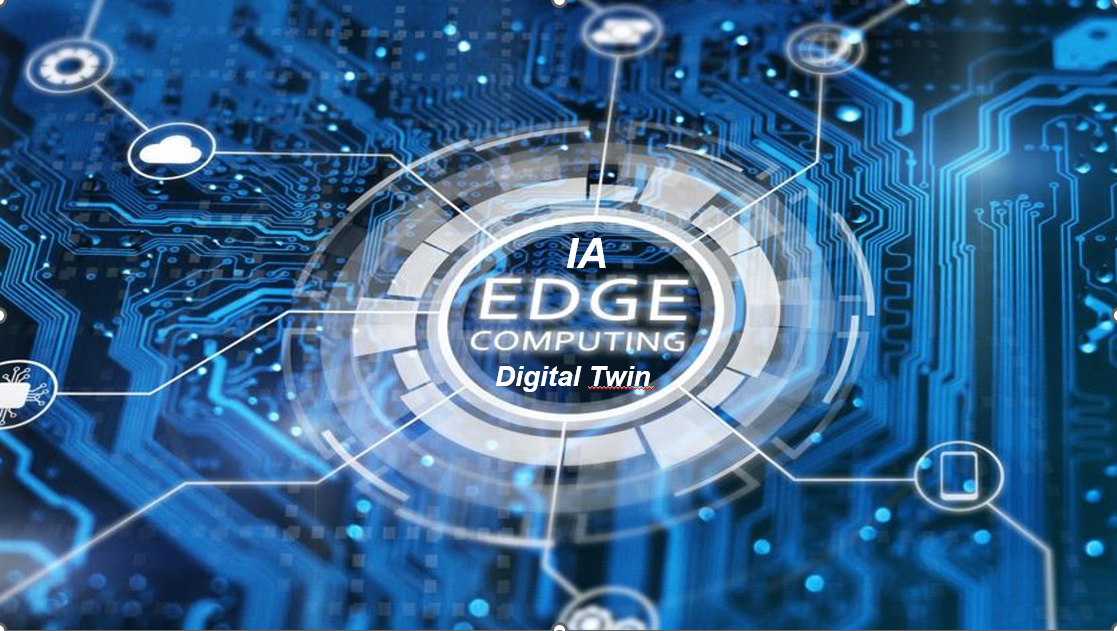Counterpoint – a global industry analyst – recently issued a report on Technology Trends highlighting those that are at their inflection point in 2023: Edge Computing, AI and Digital Twin, anticipating their convergence.
Edge Computing is becoming ubiquitous; The proliferation of IoT and implementation of 5G has accelerated the demand for real-time compute at the Edge, while Edge becomes more intelligent to embrace active compute roles, delivering real-time data insights.
As IoT plays a vital role in collecting data through sensors, Artificial Intelligence (AI) takes on the responsibility of “thinking” by analyzing the large data sets generated by IoT and enabling smart and dynamic actuation. The number of AI-based solutions introduced recently has been quite impressive.
Digital Twins – powered by virtual real-time behavior capabilities – are evolving, opening the era of Cognitive Digital Twins. These dynamic virtual replicas, enabled by leading edge modeling and simulation technologies, function autonomously and use AI for making decisions. They can reflect and simulate assets, machines and processes in real time.
Edge Computing, Artificial Intelligence and Digital Twin technologies are expected to converge in the near future; here is how and where:
As presented above, Edge Computing is used to process data from sensors and other devices located at the edge of the network, where the physical objects or systems are located. AI algorithms are used to analyze the data and make predictions about the performance of objects, systems and systems of systems. This information can be used to create a Digital Twin, which allows to simulate the performance of objects and systems in real-time.
The convergence of Edge Computing, AI, and Digital Twin technology requires key technologies:
- IoT sensors: IoT sensors are needed to collect data from physical objects and environments, such as machines, buildings, and infrastructure.
- Edge Computing platforms: Edge Computing platforms are needed to process and analyze data at the edge of the network, closer to where the data is generated, in real-time.
- AI algorithms: AI algorithms are needed to process and analyze large amounts of data generated by IoT sensors, and to extract insights, patterns, and predictions from this data.
- Cloud Computing platforms: cloud and edge cloud computing platforms are needed to store and process large amounts of data generated by IoT sensors and Edge Computing platforms, and to provide the computational resources needed to train and deploy AI models.
- Digital Twin platforms: Digital Twin platforms are needed to consistently create, combine and simulate virtual models of physical objects and environments, and to optimize and control them using AI algorithms.
- Communication protocols: they are needed to ensure interoperability and data exchange between different devices and systems: 5G, 6G, MQTT, CoAP, OPC UA, DDS, AMQP and others…
The effective integration of these technologies requires a holistic approach, involving hardware, software, and network infrastructure, to ensure seamless and secure data flow and processing.
Overall, the convergence of Edge Computing, AI, and Digital Twin technology has the potential to transform a wide range of industries – providing a number of benefits and promises – by enabling more efficient and effective data processing and decision-making:
- Healthcare: The convergence of these technologies can help improve patient care and outcomes by enabling real-time monitoring and analysis of patient data, faster and more accurate diagnoses, and more efficient drug development and clinical trials.
- Transportation and logistics: Edge Computing, AI, and Digital Twin technology can be used to optimize transportation and logistics operations, improving efficiency and reducing costs.
- Energy and utilities: The convergence of these technologies enables real-time monitoring and analysis of energy and utility systems, optimizing energy consumption, and improving maintenance processes.
- Agriculture: Edge Computing, AI, and Digital Twin technology can be used to optimize crop yields, improve irrigation and fertilization processes, and reduce waste.
- New Space: Overall, this convergence has the potential to transform the New Space industry by enabling more efficient and effective data processing, analysis, and decision-making, leading to increased mission success rates, reduced costs, and improved sustainability.
- Drones and drone swarms: likewise, it can transform the drone industry by enabling more efficient and effective data processing, analysis, and decision-making, leading to increased safety, improved environmental sustainability, and enhanced productivity.
- Smart Buildings: it holds the potential to transform the capabilities of smart buildings by enabling more efficient and effective data processing, analysis, and decision-making, leading to increased energy efficiency, improved indoor air quality, and enhanced occupant comfort.
- Robotics and Industry 4.0: enhance robots capabilities and transform industrial operations by enabling more efficient and effective data processing, analysis, and decision-making, leading to increased productivity, reduced costs, and improved safety and maintainability.
Stay tuned, we are planning to elaborate more precisely on some key innovative use cases in these industry domains, with explicit promises!


